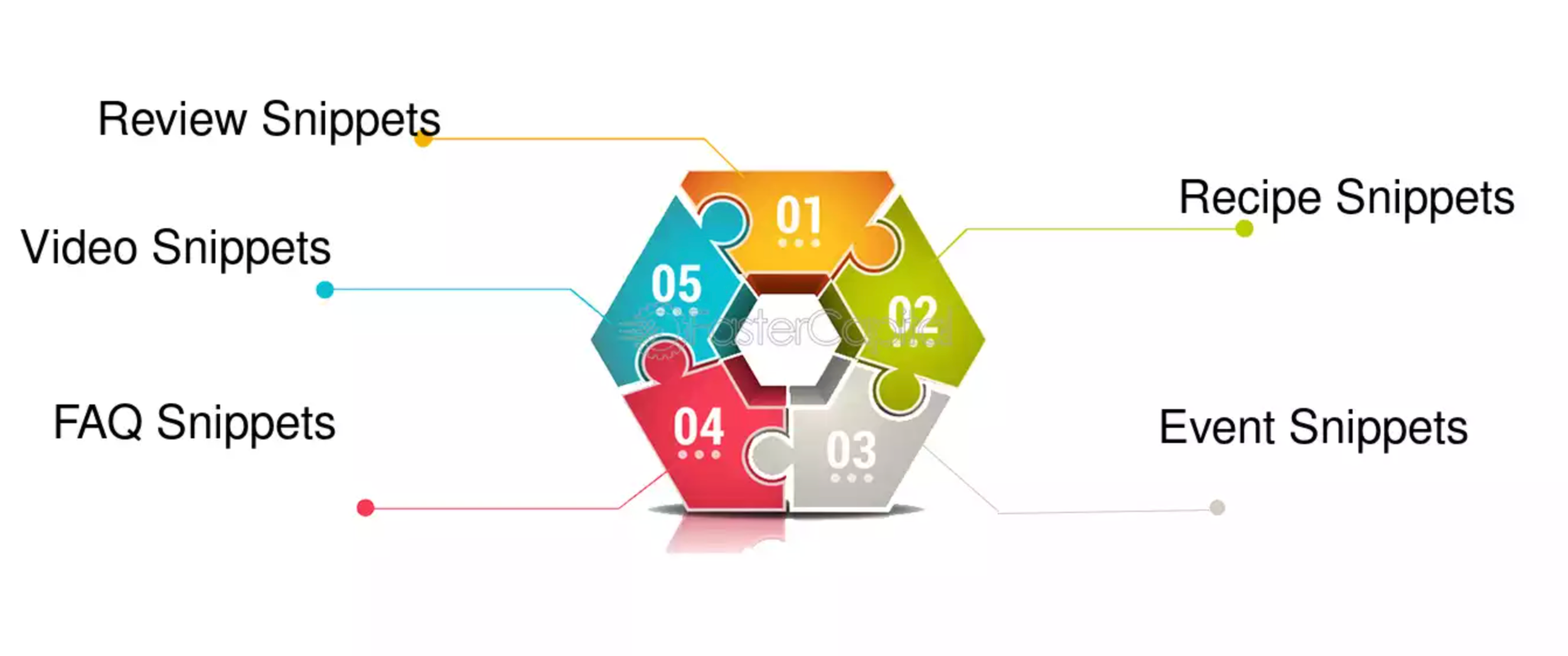
Getting a high ranking in Google search is important, but ranking alone doesn’t guarantee clicks. Users are more likely to click on results that stand out, and that’s where structured data and rich snippets come into play. By adding structured data to your website, you help Google better understand your content and display enhanced search listings, such as star ratings, product availability, FAQ dropdowns, or event details. These visual improvements can significantly boost click-through rates (CTR) and give you an edge over competitors.
This guide will walk you through what structured data is, how rich snippets work, and how to implement them effectively to win more clicks in search results.

Structured data is a standardized format for providing information about a page and classifying its content. It uses markup (usually in JSON-LD) to communicate with search engines in a way they can easily interpret.

Rich snippets are enhanced search results that display extra information pulled from structured data. They make your result more attractive and informative compared to plain blue links.
There are 5 common types of rich snippets, including:

These visual enhancements not only draw attention but also build trust and relevance, leading to higher click-through rates.
Structured data and rich snippets are directly connected, but they’re not the same thing.
To put it simply:
Not every structured data implementation automatically produces a rich snippet, but Google decides whether to show it based on quality, relevance, and trust. But without structured data, your chances of getting rich snippets are almost zero.
Structured data improves how search engines understand your site, and rich snippets improve how users perceive your site in search results. Together, they boost CTR by making your listing more attractive, trustworthy, and relevant. Let’s explore the details below:
Most search results are just a title, URL, and short description. Rich snippets add visual enhancements like stars, product prices, images, or FAQ dropdowns. This makes your result eye-catching and draws attention away from competitors, even if you’re not ranked #1.
When users see star ratings, reviews, or verified product details directly in the search result, they gain confidence in your brand before even visiting your site. This credibility often translates into higher click-through rates (CTR), especially in competitive niches like eCommerce or local businesses.
Rich snippets give searchers a preview of what they’ll find, whether it’s recipe cooking time, event dates, or FAQs. This reduces uncertainty and makes users more likely to click because they already know your page matches their intent.
Because rich snippets set clear expectations, people who click are usually more qualified. For example, if your product snippet shows “Out of stock,” casual browsers won’t click, but serious buyers will waitlist or choose another product. This filters your traffic, reducing bounces and improving engagement.
Google wants to deliver the best answers fast. Structured data helps it understand your content better, rewarding you with enhanced visibility. Since rich snippets often occupy more SERP space, they increase your chances of winning clicks even if your ranking position doesn’t change.
To turn ordinary search listings into eye-catching results, you need to implement structured data correctly so that Google can display rich snippets. Structured data is the code you add, while rich snippets are the enhanced listings that appear when Google understands and trusts that code. By combining both, you can improve visibility, trust, and click-through rates.
Different businesses benefit from different schema markups, and the right choice depends on your goals, whether that’s selling products, attracting local customers, or publishing content.
When you align the right schema type with proper implementation, you increase the chances of earning rich snippets. These not only make your listing visually stand out but also encourage qualified clicks from users who see your page as more relevant and trustworthy.
Structured data and rich snippets are no longer “nice-to-have” SEO tactics, but they’re essential tools for standing out in today’s crowded search results. By helping Google interpret your content more accurately, you not only improve your chances of appearing in enhanced listings but also create a stronger first impression with users.
Whether it’s showing product ratings, FAQ answers, or local business details, these features give your listings an edge that plain text results can’t match. The key is to choose the right schema types for your business, implement them correctly, and keep your information accurate and up to date. When done right, structured data and rich snippets can transform your visibility in search, attract more qualified traffic, and ultimately drive more conversions.